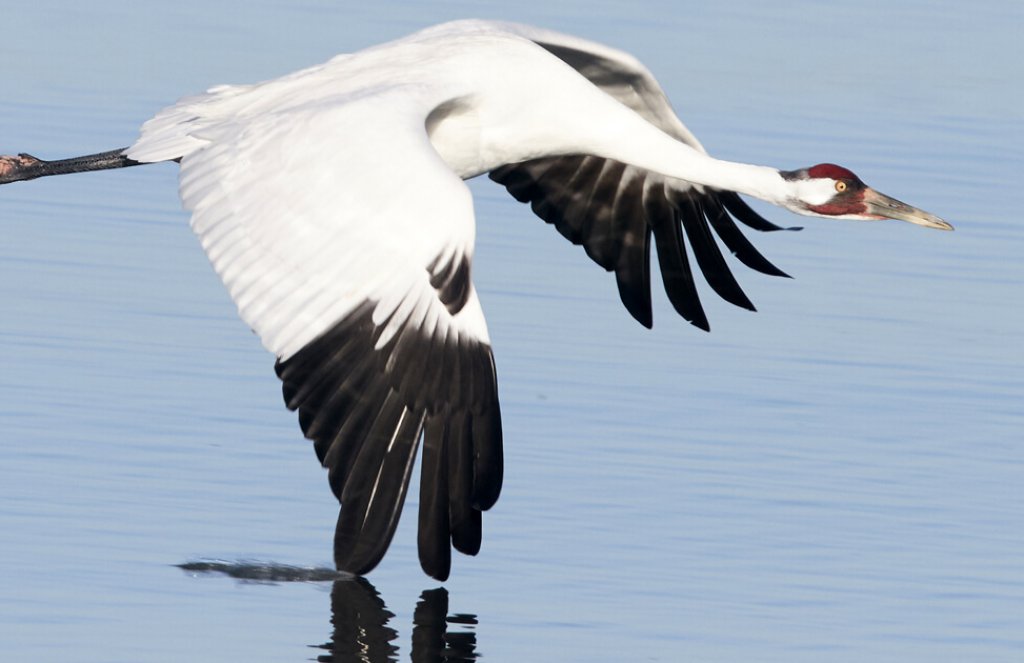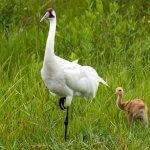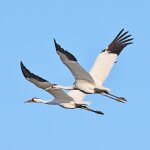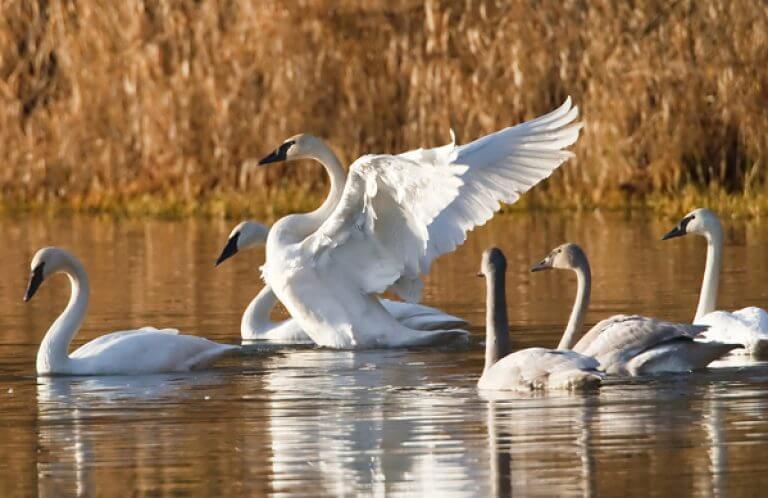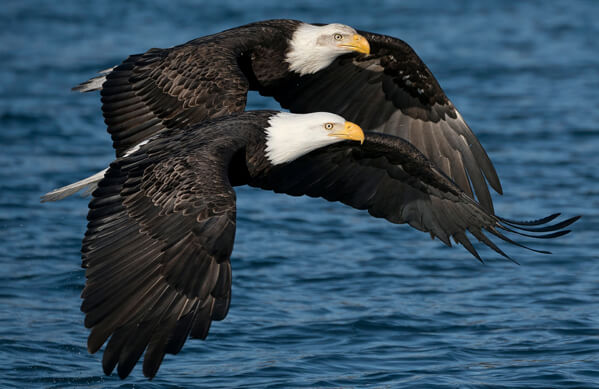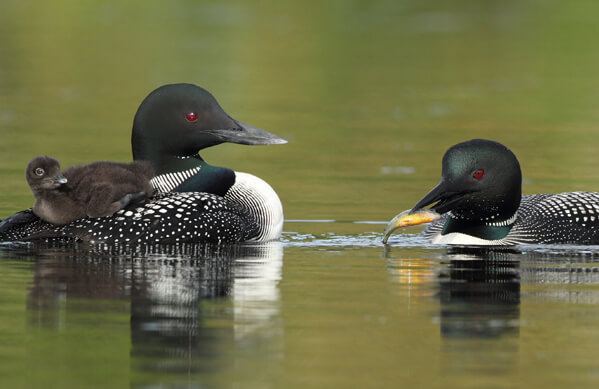About the Whooping Crane
The elegant Whooping Crane has a seven- to eight-foot wingspan and stands up to five feet tall—the tallest flying bird in North America. It is named for its resonant call, which can be heard over great distances thanks to an extra-long trachea that coils around the bird's breastbone twice like a French horn.
Songs and Sounds of the Whooping Crane
Like other cranes, the Whooper is noisy; the word “crane” comes from the Anglo-Saxon "cran," which means "to cry out."
Whooping Crane Breeding and Feeding
These majestic cranes are monogamous and mate for life. Mated pairs perform an elaborate dance display during courtship, with leaps, wing flaps, head tosses, and flinging of feathers, grass, and other small items. They build a nest of rushes, where the female usually lays two eggs. Both sexes share incubation and brood-rearing duties.
Despite the fact that most pairs lay two eggs, only the first-hatched chick usually survives unless habitat conditions are good. Food availability and predator abundance are major factors in chick survival. Young Whooping Cranes, known as "colts", are slow-maturing, and do not usually begin to breed until they are four to five years old.
Whooping Cranes are omnivorous, feeding on a range of live prey and vegetation. Their preferred winter foods include blue crabs and clams; during the nesting season they feed on aquatic invertebrates, small fish, frogs, and berries. During migration, their primary source of food is waste grain in agricultural fields.
Whooping Crane Region and Range
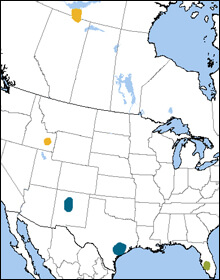
Today, there is only one self-sustaining wild population of Whooping Cranes. These birds nest in Wood Buffalo National Park and adjacent areas in Canada and winter in the coastal marshes of Texas, particularly in the Aransas National Wildlife Refuge.
Whooping Cranes migrate during the day, sometimes in company with Sandhill Cranes. The chicks learn migration routes and nesting locations from adult cranes.
On the wintering grounds, pairs and family groups occupy and defend territories. Subadults and unpaired adults form separate flocks that use the same habitat but remain outside occupied territories.
A captive-raised, non-migratory population exists in central Florida, and a small population of Whooping Cranes form an eastern migratory population that moves between Wisconsin and Florida. (Learn more about the latter flock from Operation Migration.)
Conservation of the Whooping Crane
Habitat loss remains one of the biggest threats facing wild Whooping Cranes. Collisions with wind turbines and power lines are an ongoing threat, and unfortunately, this bird is still illegally shot by hunters.
Once found throughout North America, the last wild flock of Whoopers had been reduced to fewer than 20 birds by the 1940s, due to habitat loss and hunting. Intensive conservation efforts and international cooperation between Canada and the United States rescued the species from extinction, but it remains extremely rare. Conservation stemming from the bird's Endangered Species Act listing has been essential to the Whooping Crane and many other birds, as our 2016 report shows.

Although this species has been saved from extinction for the moment, and populations are increasing, the Whooping Crane remains the rarest of the world's 15 crane species. It is classified as Endangered on both the U.S. Endangered Species List and the IUCN Red List, as well as the 2014 State of the Birds Watch List.
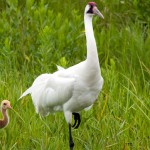
Help support ABC's conservation mission!
Poorly-sited wind turbines pose a particular threat to Whooping Cranes, since their population is still so dangerously small. At least 5,500 turbines already exist in the species' migratory corridor and more than 18,000 are planned.
We at American Bird Conservancy continue to lead the charge for Bird-Smart Wind Energy to protect this crane and many other birds. For example, our report on the 10 worst-sited wind projects highlighted the Merricourt Wind Energy Project in North Dakota, which lies directly in a key migratory pathway of Whooping Crane.
ABC and the International Crane Foundation have voiced strong concerns about the project. Both groups support the development of clean, renewable sources of energy such as wind and solar power but believe that it must be done responsibly and with minimal impact on our public trust resources, including native birds like the Whooping Crane.





































